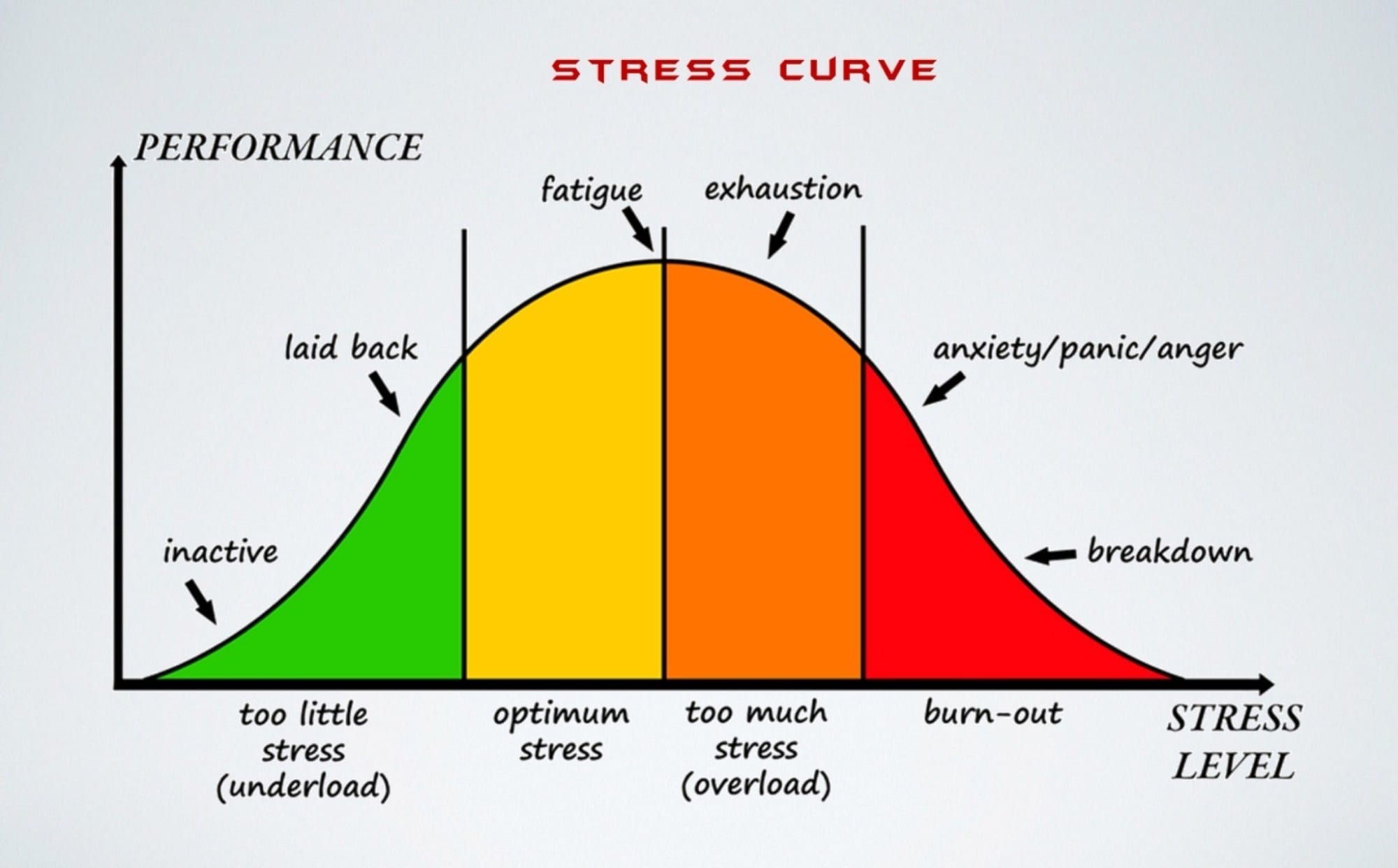In the post below, junior computer science major Nkemdi Anyiam from Richardson, TX, shares insights about studying and stress.
by Nkemdi Anyiam ’22 – With finals right around the corner, I think it’s important to address a factor that most of us are dealing with: stress. In April, I attended a workshop hosted by the Student Engineers’ Council (SEC) and Counseling and Psychological Services (CAPS), and the main discussion was about identifying stressors. The first big takeaway is the idea of optimal stress levels; look at the graphic here:
To put it shortly, if you begin to feel overwhelmed, it may actually be optimal to take a strategic break rather than over-exert yourself. Your brain is much more efficient when it is well-rested, and taking some time to lower your stress levels allows you to think more clearly, saving you more time in the long run (this is the same idea behind why you can struggle at a difficult task for hours and then complete it easily after you take a break). A second notable takeaway is learning how to recognize that you are stressed in the first place. That may seem obvious, but in reality, stress can manifest in ways that are not always clear. Sometimes it appears at anxiety and panic, but it can also show up as anger (I realized that this was the case for me), sadness, and other negative emotions. Other signs are cognitive, like having poor judgement or memory problems, while others are more behavioral, like eating more/less or procrastinating.

There are numerous signs that you may not even recognize as being attributed to stress, so the speaker at the workshop provided this worksheet that might help sort out some possibilities. When you understand how to identify when you’re putting too much pressure on your mind, it becomes much easier to counteract it and improve your workflow, so do your best to preserve your mental health during this last stretch of the semester!

